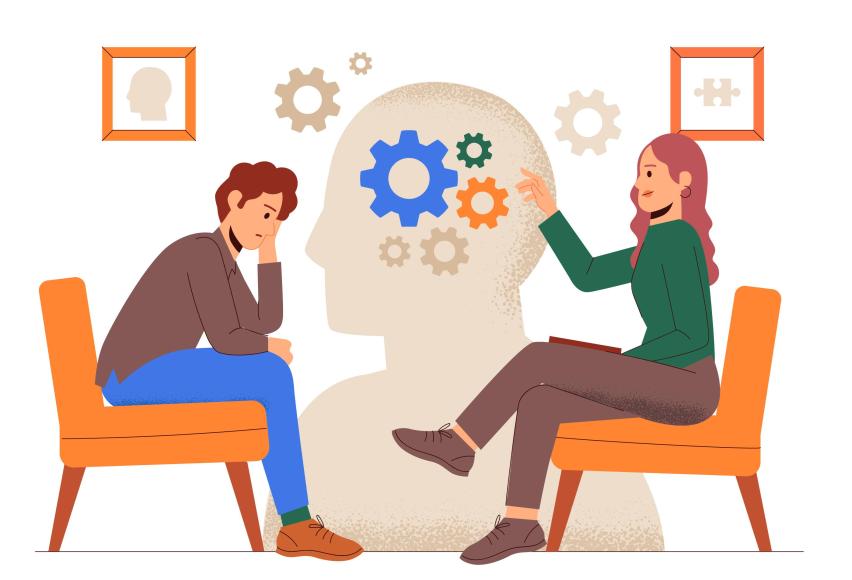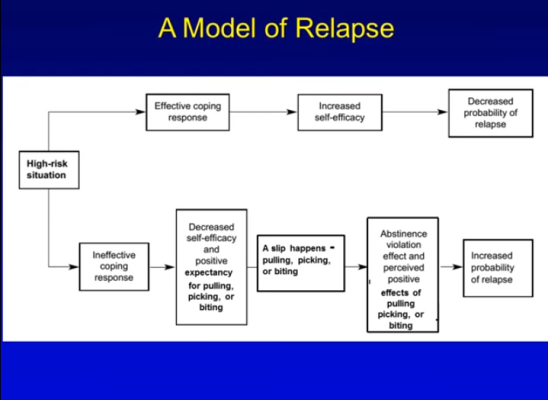The Therapist-Client Relationship: The Power of the Alliance

Online test
Find out the severity of your symptoms with this free online test
Ask anyone who has been to therapy for their hair pulling, and one of the first things they’re likely to tell you about is their therapist. They will probably tell you about the connection they had (or didn’t have) long before they tell you about the things they learned in therapy. That connection they’re referring to is the therapist-client connection and it is one of the most powerful, yet underestimated, factors in the outcome of treatment for hair pulling and other mental health disorders.
When it comes to the practice of therapy, strategies and techniques are pretty standard. Sure, some therapists have specialties such as treating body-focused repetitive disorders like hair pulling, but their basic training is very similar. What is unique to therapy is the experience that every client has with their therapist. What makes therapy unique to each person’s experience is something more than just a therapist’s training. It's the connection a client and therapist have. In fact, one of the most powerful determinants of success or failure in therapy is the connection between the therapist and the client. This connection is commonly known as the therapeutic alliance and when it comes to therapy outcomes, it can be a deal maker or a deal breaker.
Unwrapping the Therapist-Client Relationship
The therapist-client relationship is essentially how you and your therapist connect and engage with each other in the therapy room. It’s the bond you form with each other in that space. Clients often describe it as a feeling of “being in this together”. This alliance is built on trust and allows for an open and honest rapport as you work together toward your treatment goals. For some people, this connection may be the first time they’ve ever experienced a healthy way of relating.
Part of therapy is developing rapport and collaboration between the client and the therapist. It’s that rapport that is the foundation of the partnership for the work you’ll do together. The therapeutic alliance is generally considered by therapists to be one of the primary tools for helping clients achieve positive change.
A 2018 meta-analysis of hundreds of studies covering decades of research and thousands of clients found overwhelming support for the relationship between a positive therapeutic alliance and positive treatment outcomes, regardless of the therapeutic modality used. In other words, the alliance itself seems to play a more significant role in treatment outcomes than the treatment approach itself. That’s not to say that choosing the right treatment modality doesn’t matter because it does. But the therapist-client relationship in the therapy room is what can pave the way for change and healing to occur.
What Makes This Relationship So Important?
The logical question is, what is it about these therapist-client relationships that make them so influential? Are there certain qualities of the relationship that support positive treatment outcomes? The answer seems to be yes.
Now, the idea of the therapeutic alliance isn’t new. Freud first recognized the relationship between client and therapist well over 100 years ago. His focus was a phenomenon known as transference, a process in which a client unknowingly transfers feelings from their past onto the therapist. He considered it part of the therapeutic relationship.
Carl Rogers, the father of person-centered therapy, considered the most important, core qualities of the therapeutic relationship to be:
- Congruence – the therapist is open, genuine, and authentic
- Unconditional positive regard – deep and genuine caring for the client
- Empathy – the therapist’s ability to genuinely and accurately understand the client’s experience and feelings
Another therapeutic alliance theory focuses on the collaborative nature of the relationship, identifying three main features:
- Developing treatment goals together
- Agreeing on the tasks of treatment
- Emotional bonding between the therapist and client
This collaboration allows you, the client, to actively participate in the treatment process.
More recently, researchers have taken a closer look at the qualities of the therapist-client relationship and which seem to be most influential in positive treatment outcomes:
- Collaboration between the client and therapist
- Goal consensus
- Empathy
- Unconditional positive regard and affirmation
- A sense of a real relationship/feeling connected
- Giving and receiving feedback
- Emotional expression and congruence/genuineness
- Managing transference issues
Rather than “one thing”, there seems to be a constellation of relationship qualities that can come together to form the basis of a healthy, positive working relationship.
What Does This Mean for Clients?
In recent years, there’s been a movement towards evidence-based and individualized care. The therapeutic alliance fits well into this approach to care. After all, each person, therapist or client, comes to the therapy room with their own personality and preferences. Finding the fit means finding the relational and therapeutic approaches that make sense for that relationship and a client’s attachment style, culture, therapy preferences, religious/spiritual commitment, reactance level, stage of change, and coping style. One study referred to this individualized care approach as “a new therapy for each patient.”
It makes sense then that finding the right fit for you matters not just for comfort but also for its potential impact on the treatment process.
So, what can you, as the client, do to maximize your chances of finding a good fit?
- Work with a therapist that you feel “gets you” and works with you.
- Work with someone who suits your personality and needs.
- Take your time. Finding the right fit in a therapist is like finding a great pair of shoes. You may have to try on a few until you find the perfect fit. It’s ok and just because the first one doesn’t fit doesn’t mean that you have to settle for a poor fit or go barefoot. The right fit for you is out there.
Remember, in the beginning of any new relationship, things can be uncomfortable as you get to know each other. Give it time to grow but if you still feel like it’s just not a good fit, it’s ok to move on. The goal of therapy is YOUR healing and therapists understand the importance of fit. When you find the right fit for you, you’ll know it.
References
1. Flückiger, C., Del Re, A. C., Wampold, B. E., & Horvath, A. O. (2018). The alliance in adult psychotherapy: A meta-analytic synthesis. Psychotherapy, 55(4), 316-340. https://psycnet.apa.org/fulltext/2018-23951-001.html
2. Overholser, J. (2007). The central role of the therapeutic alliance: A simulated interview with Carl Rogers. Journal of Contemporary Psychotherapy: On the Cutting Edge of Modern Developments in Psychotherapy, 37(2), 71–78. https://psycnet.apa.org/record/2008-00837-002
3. Norcross, J. C., & Lambert, M. J. (2018). Psychotherapy relationships that work III. Psychotherapy, 55(4), 303-315. https://pubmed.ncbi.nlm.nih.gov/30335448/
4. Bordin, E. S. (1979). The generalizability of the psychoanalytic concept of the working alliance. Psychotherapy: Theory, Research & Practice, 16(3), 252–260. https://psycnet.apa.org/record/1980-23666-001
5. Norcross, J. C., & Wampold, B. E. (2018). A new therapy for each patient: Evidence-based relationships and responsiveness. Journal of Clinical Psychology, 74(11), 1889-1906. https://onlinelibrary.wiley.com/doi/10.1002/jclp.22678
Online test
Find out the severity of your symptoms with this free online test
Start your journey with TrichStop
Take control of your life and find freedom from hair pulling through professional therapy and evidence-based behavioral techniques.
Start Now



